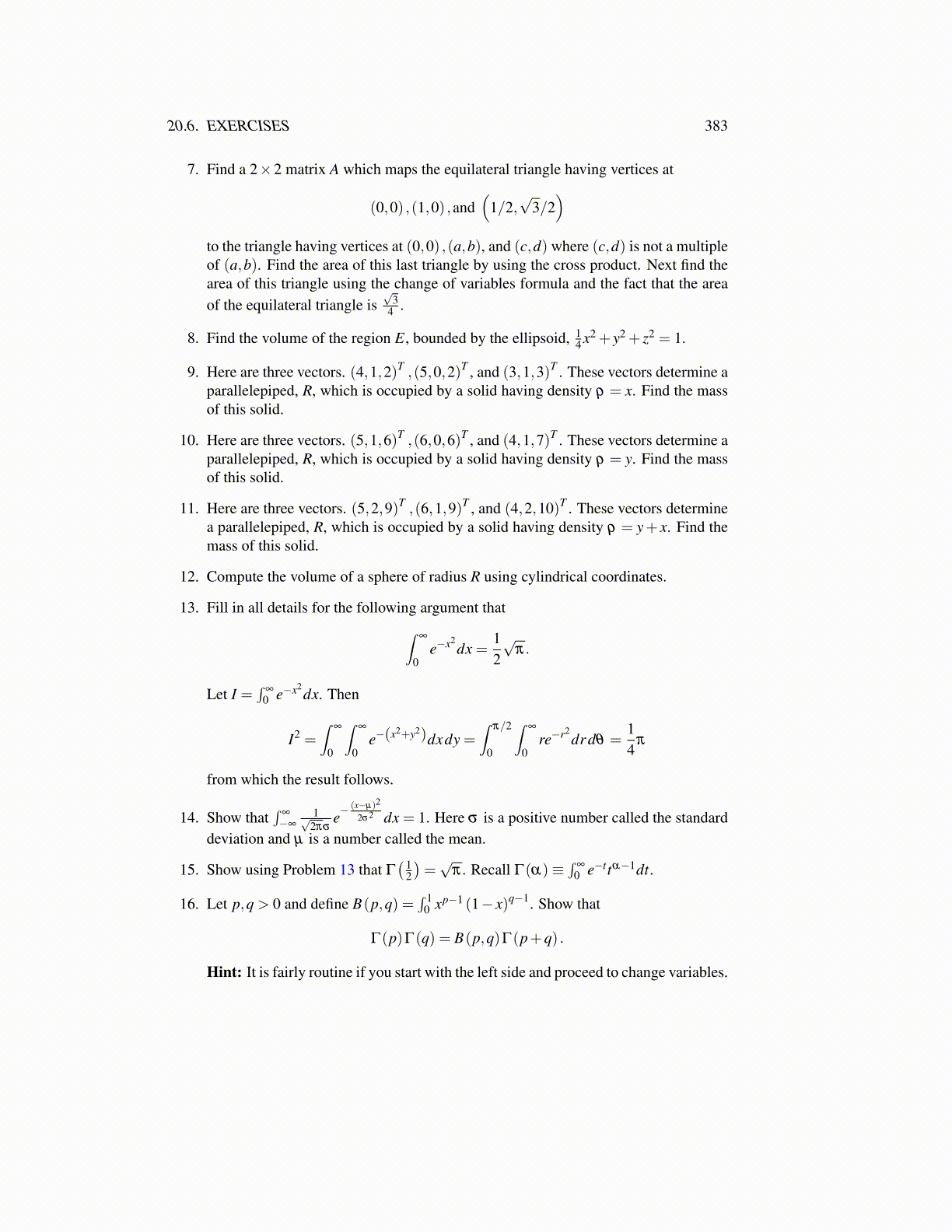
20.6. EXERCISES 383
7. Find a 2×2 matrix A which maps the equilateral triangle having vertices at
(0,0) ,(1,0) ,and(
1/2,√
3/2)
to the triangle having vertices at (0,0) ,(a,b), and (c,d) where (c,d) is not a multipleof (a,b). Find the area of this last triangle by using the cross product. Next find thearea of this triangle using the change of variables formula and the fact that the areaof the equilateral triangle is
√3
4 .
8. Find the volume of the region E, bounded by the ellipsoid, 14 x2 + y2 + z2 = 1.
9. Here are three vectors. (4,1,2)T ,(5,0,2)T , and (3,1,3)T . These vectors determine aparallelepiped, R, which is occupied by a solid having density ρ = x. Find the massof this solid.
10. Here are three vectors. (5,1,6)T ,(6,0,6)T , and (4,1,7)T . These vectors determine aparallelepiped, R, which is occupied by a solid having density ρ = y. Find the massof this solid.
11. Here are three vectors. (5,2,9)T ,(6,1,9)T , and (4,2,10)T . These vectors determinea parallelepiped, R, which is occupied by a solid having density ρ = y+ x. Find themass of this solid.
12. Compute the volume of a sphere of radius R using cylindrical coordinates.
13. Fill in all details for the following argument that∫∞
0e−x2
dx =12√
π.
Let I =∫
∞
0 e−x2dx. Then
I2 =∫
∞
0
∫∞
0e−(x2+y2)dxdy =
∫π/2
0
∫∞
0re−r2
dr dθ =14
π
from which the result follows.
14. Show that∫
∞
−∞
1√2πσ
e−(x−µ)2
2σ2 dx = 1. Here σ is a positive number called the standarddeviation and µ is a number called the mean.
15. Show using Problem 13 that Γ( 1
2
)=√
π . Recall Γ(α)≡∫
∞
0 e−ttα−1dt.
16. Let p,q > 0 and define B(p,q) =∫ 1
0 xp−1 (1− x)q−1. Show that
Γ(p)Γ(q) = B(p,q)Γ(p+q) .
Hint: It is fairly routine if you start with the left side and proceed to change variables.